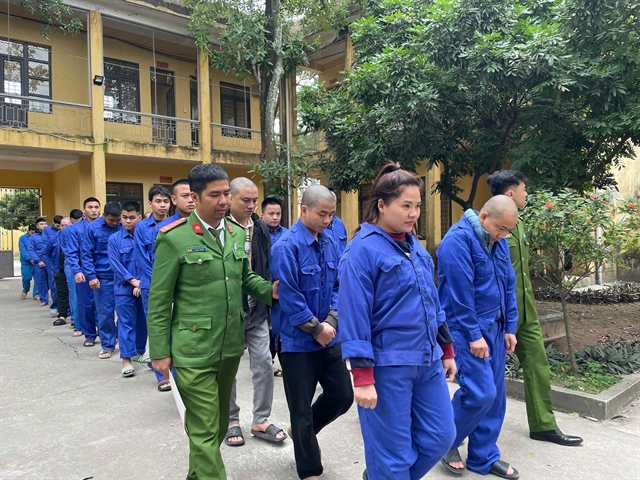 Society
Society

Up to 76 per cent of pork meat sold in traditional markets in Việt Nam are slaughtered in substandard abattoirs. The rate of pork meat infected with Salmonella, a group of bacteria that can cause food poisoning, is estimated at 30-40 per cent.
 |
| A slaughterhouse of the Vissan Limited Company in HCM City’s Bình Thạnh District. A World Bank report suggests Việt Nam checks food hygiene and safety at farms and production sites instead of markets and restaurants. — VNA/VNS Photo Thanh Vũ |
HÀ NỘI — Up to 76 per cent of pork meat sold in traditional markets in Việt Nam are slaughtered in substandard abattoirs. The rate of pork meat infected with Salmonella, a group of bacteria that can cause food poisoning, is estimated at 30-40 per cent.
The data were reported yesterday after a six-month survey conducted by the World Bank in Việt Nam between August 2016 and February 2017 in the two major cities of Hà Nội and HCM City.
The survey found that breeders were using banned substances to raise pigs.
Additionally, abuse of antibiotics and pesticides in agricultural production and livestock breeding was thought to cause an increased risk of antibiotic and pesticide residues in food, the survey said.
According to the World Bank, although Việt Nam has spent much money and mobilised human resources to remedy the problems, policy and implementation are still a way apart.
Therefore, the survey suggested Việt Nam check food hygiene and safety at farms and production places instead of inspecting them at markets and restaurants as it does now. Việt Nam should improve infrastructure, such as markets and slaughter houses, to raise the quality of food hygiene and safety.
Speaking at the survey presentation event, Deputy Prime Minister cum head of the National Steering Committee on Food Hygiene and Safety Vũ Đức Đam, said ensuring food safety was a top priority in recent years. He added that surveys and recommendations by international organisations are necessary in helping Viet Nam overcome food safety shortcomings.
Đam said he appreciated the World Bank survey and recommendations. He also said the law on food hygiene and safety had clearly assigned responsibility to three ministries: health, agricultural and rural development, and industry and trade.
Local authorities have also been ordered to improve management and oversight of food hygiene and safety, a task made difficult by the fact that most food is produced on a small scale and in scattered locales, he said. The country has about 35,000 small abattoirs.— VNS




